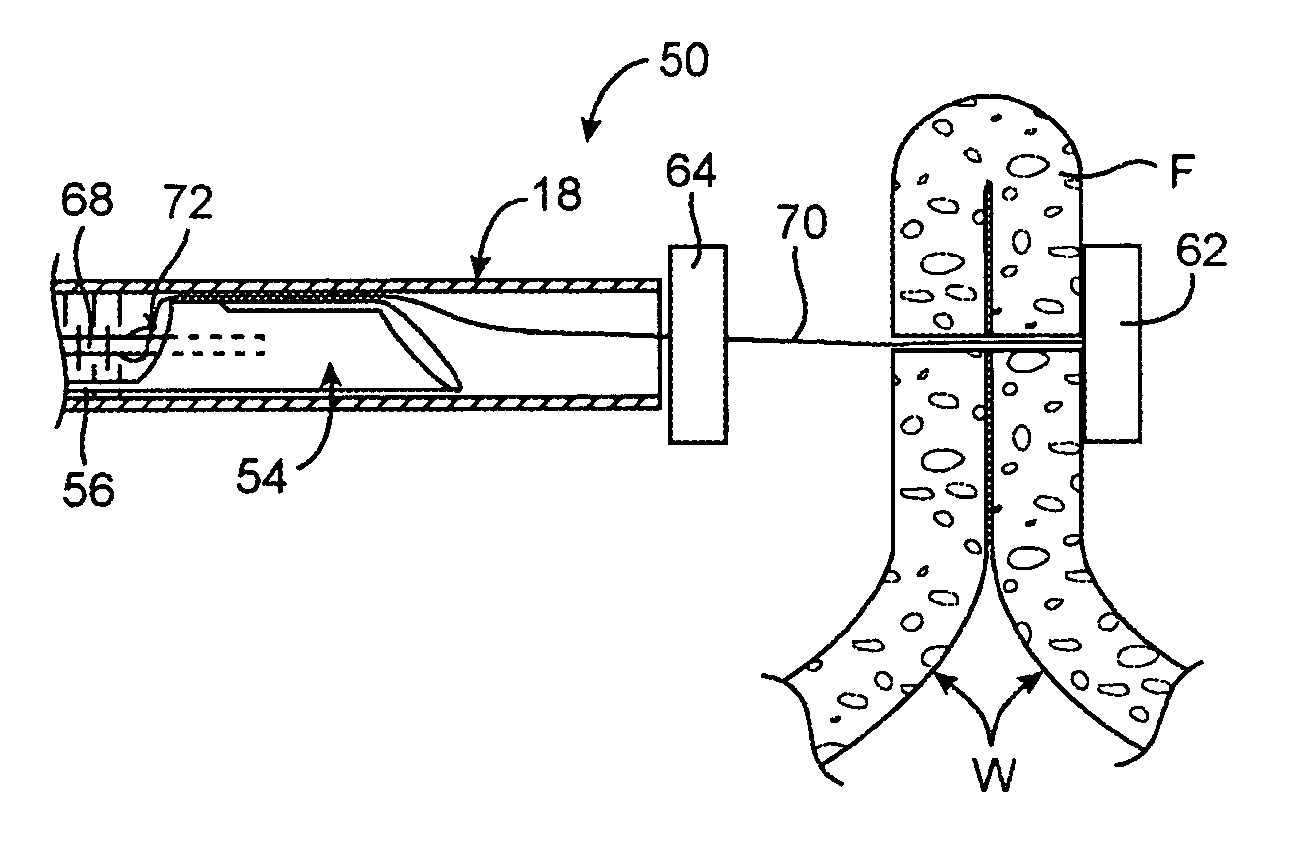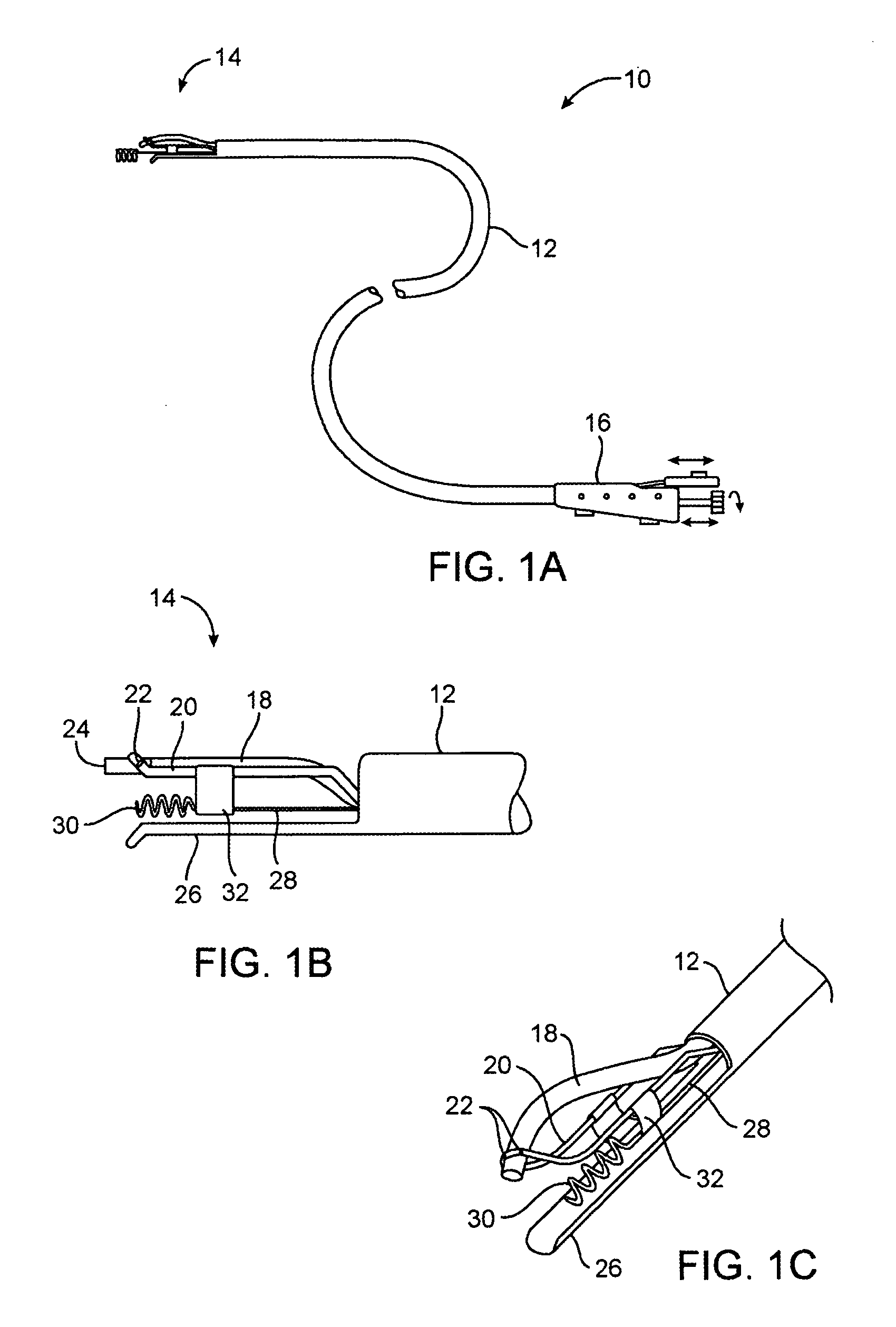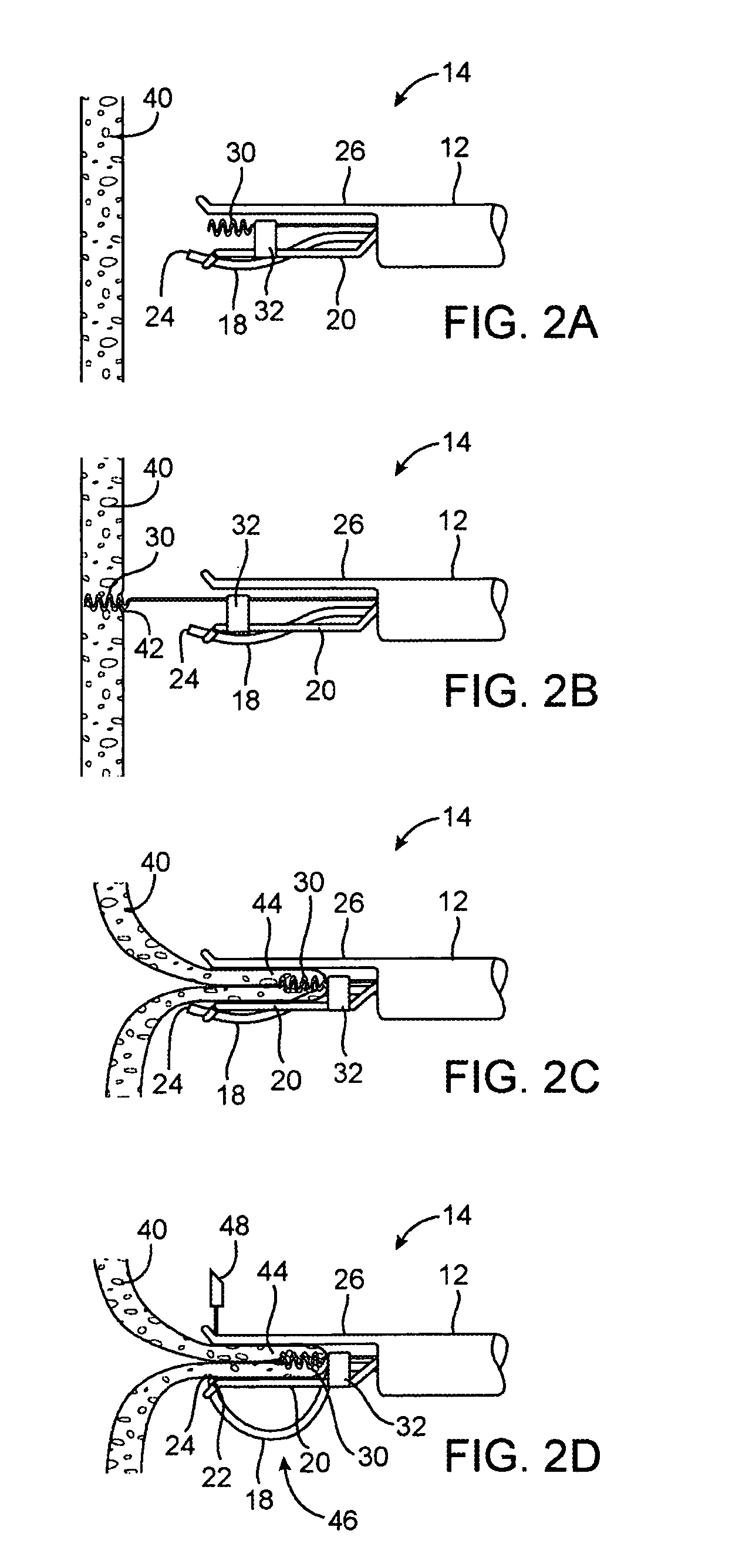Apparatus and methods for positioning and securing anchors
a technology of apparatus and anchors, applied in the field of apparatus and methods for positioning and securing anchors within tissue, can solve the problems of atypical diarrhea, electrolytic imbalance, and many life-threatening problems, and achieve the effects of preventing sutures from slipping through tissue, and reducing the risk of electrolysis
- Summary
- Abstract
- Description
- Claims
- Application Information
AI Technical Summary
Benefits of technology
Problems solved by technology
Method used
Image
Examples
Embodiment Construction
[0090] In order to first create the plication within a body lumen of a patient, various methods and devices may be implemented. The anchoring and securement devices may be delivered and positioned via an endoscopic apparatus that engages a tissue wall of the gastrointestinal lumen, creates one or more tissue folds, and disposes one or more of the anchors through the tissue fold(s). The tissue anchor(s) may be disposed through the muscularis and / or serosa layers of the gastrointestinal lumen.
[0091] Generally, in creating a plication through which a tissue anchor may be disposed within or through, a distal tip of a tissue plication apparatus may engage or grasp the tissue and move the engaged tissue to a proximal position relative to the tip of the device, thereby providing a substantially uniform plication of predetermined size.
[0092] Formation of a tissue fold may be accomplished using at least two tissue contact areas that are separated by a linear or curvilinear distance, wherei...
PUM
 Login to View More
Login to View More Abstract
Description
Claims
Application Information
 Login to View More
Login to View More - R&D
- Intellectual Property
- Life Sciences
- Materials
- Tech Scout
- Unparalleled Data Quality
- Higher Quality Content
- 60% Fewer Hallucinations
Browse by: Latest US Patents, China's latest patents, Technical Efficacy Thesaurus, Application Domain, Technology Topic, Popular Technical Reports.
© 2025 PatSnap. All rights reserved.Legal|Privacy policy|Modern Slavery Act Transparency Statement|Sitemap|About US| Contact US: help@patsnap.com



